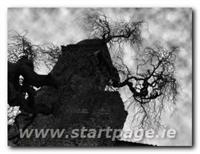The Origins of Halloween

The Halloween celebration we enjoy today are closely tied to historical events dating back for hundreds of years. Halloween's roots can be traced back for several centuries to the ancient Celtic festival of Samhain. The still enduring traditions of Halloween costumes, trick or treating, and ghosts and goblins are strongly rooted in the ancient beliefs and traditions that originated with Samhain.
The ancient Celts believed that souls of the departed were able to walk the earth each year on October 31, the eve of the annual harvest. They believed that many of the souls given passage back to earth were malicious spirits whose goal was to frighten or scare the living when given the opportunity to mingle. The Celts took to dressing up in animal costumes on Samhain, believing this would protect them from harm. They believed that they by disguising themselves as spirits, they would be able to keep spirits intending harm from striking out against them.
The ancient Celts also believed they could keep spirits from bringing harm to them by preparing treats for them. To keep the malevolent spirits at bay, Celtic people traditionally prepared sweets, which they left in front of their homes for the spirits who walked the earth each October 31 to enjoy. The idea was that even those spirits who originally intended harm would be deterred because of the treats left for them.
One the evening of the Samhain festival, many Celts observed the custom of gathering around a large bonfire in their villages. Wearing costumes, they frolicked and danced around the fire throughout the evening. When the fire died down, the villagers created a large circle from its ashes. The attendees placed a stone on the ashes before retiring for the evening. Each person returned to check the status of his or her stone first thing in the morning on November 1, hoping it was positioned exactly the way it was the evening before. The superstitions of the time held that those whose stones cracked or moved overnight would not survive the coming year.
During the 19th Century, large numbers of Celtic immigrants relocated to North America, bringing their beliefs and traditions, including Samhain, with them. Over time, the activities and traditions associated with the pagan Samhain festival eventually evolved into the present day Halloween holiday. Throughout history, October 31 has been referred to by several different names, including All Hallows Eve, All Souls Day, and eventually became the modern Halloween celebration.
See more on:
-
Halloween Articles -
Folklore Articles